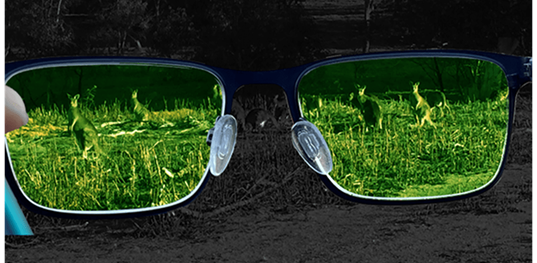An international team of researchers, including Nottingham Trent University in the UK and the Australian National University (ANU) have fabricated a thin film meta-surface that they claim allows ordinary glasses to see in infrared (IR), thereby creating a new type of night vision technology. This meta-surface can be transferred to transparent glass, forming a layer of nanocrystals on its surface. This meta-surface can easily be applied to the glass of regular lightweight spectacles. The technology works as follows - through introducing and mixing a secondary beam of photons, the meta-surface is used to up-convert IR photons to visible light. The addition of this secondary beam provides the additional energy required to raise the frequency of the IR photons to the visible region of the spectrum. Interestingly the researchers also used a Charge Coupled Device (CCD) sensor to view the image, which implies the up-converted image is currently still too weak to see with the naked eye.
The technology is still in its proof of concept phase. Nevertheless, the researchers envision their technology could one day replace the bulky, power-hungry night vision goggles currently in use by the military, police and security services. They argue that their new technology could enable lightweight, cheap and easy to mass-produce night vision glasses that would be available to everyday users.
To quote Professor Neshev, a lead researcher from the ANU: “the new tech used meta-surfaces, or thin films, to manipulate light in new ways...This is the first time anywhere in the world that infrared light has been successfully transformed into visible images in an ultra-thin screen. It’s a really exciting development and one that we know will change the landscape for night vision forever.”
Estimated time to maturity: 2 to 5 years
Image credit: Lei Xu, Nottingham Trent University.
Source: Nottingham Trent University, 15 June 2021
